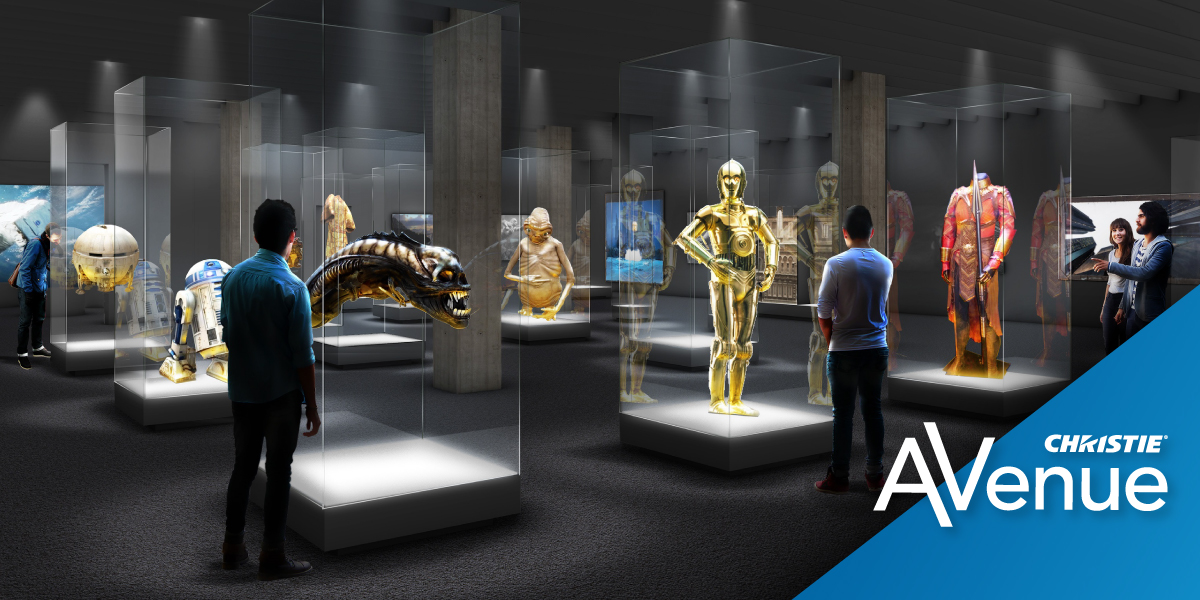Breaking barriers at the Academy Museum of Motion Pictures

All film directors strive to create something new, unusual, and distinct, something recognizably special to them. Few achieve it, and those who do we laud as geniuses. But even Tarantinos and Hitchocks and Kurosawas need to build on what has gone before; there’s little point in inventing a new language no one speaks.
That was the challenge facing the Academy Museum of Motion Pictures, for they were opening a museum for a much-loved media and doing so during a global pandemic. The tempting solution would have been to build something wholly around touchless technologies even though it might cut across cinema’s own sophisticated visual traditions. Faced with a choice of inventing a new language that their visitors would have to learn or finding a familiar grammar both cinematic friendly and pandemic proof, they chose the latter.
Christopher Richmond, Exhibition AV Manager at the Academy Museum, explains that original concept. “Even before the pandemic, the decision had been taken to eliminate any touchscreens and headphones because our curatorial and design teams were intent on preserving the integrity of the cinematic proscenium. We wanted carefully created looping video to mimic the feeling of watching something chronological – so visitors have the sense of joining something, and we didn’t want the auditory experience to be headphone-based or anything static – we wanted the shared experience cinema brings.”
In doing so, the Academy Museum of Motion Pictures has discovered that touchless is only part of the answer, that it has its place, but that it is no panacea. Indeed, the key was to stay true to the idioms and interface fundamentals of both cinema and academia. Design something well from the start, and you design out barriers, create something new and often, you impose them.
So, for example, in a small exit corridor, and contrary to all installation wisdom, the museum installed a video wall with a far larger pixel-pitch than one would typically choose, especially when people can walk so close to it. Here visitors can see for themselves how pixels make up an image without the need for audio commentary or written explanation. Like Roy Lichtenstein’s Benday dot artworks, the video wall draws back the curtain on how we see and does so magnificently in a space that could easily have gone unused.
In keeping to the design principles first formulated in pre-pandemic days and applying these to the pandemic reality they faced, the Academy Museum has provided all necessary social distancing measures without significant audience barriers.
Audiences who come to celebrate the best that cinema can offer enjoy an organic experience—proving that when you have the basics right, a space feels normal and natural. That has always been the Christie way too – for us, understanding what tech is for and how people will react to it is everything. It’s why there’s so much Christie kit here, from projectors and LCD panels to Pandoras Box content management solutions; because Christie Professional Services had been so committed to making the original concept Christopher Richmond described work.
Christopher again: “Throughout the museum, there is an array of montages and excerpts from favorite feature films, historically important films, rare variants, and interviews. Sometimes these are displayed using a single projector, sometimes using a blended, multi-projector display, and sometimes on small monitors embedded in casework. Audio plays on everything from a single mono speaker or directional speakers to full Dolby Atmos. And it’s the original design intent that holds it all together.”
All without a barrier in sight.






